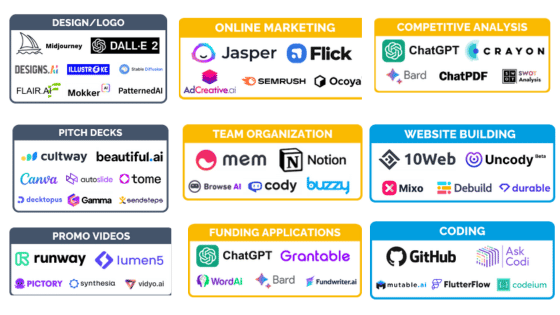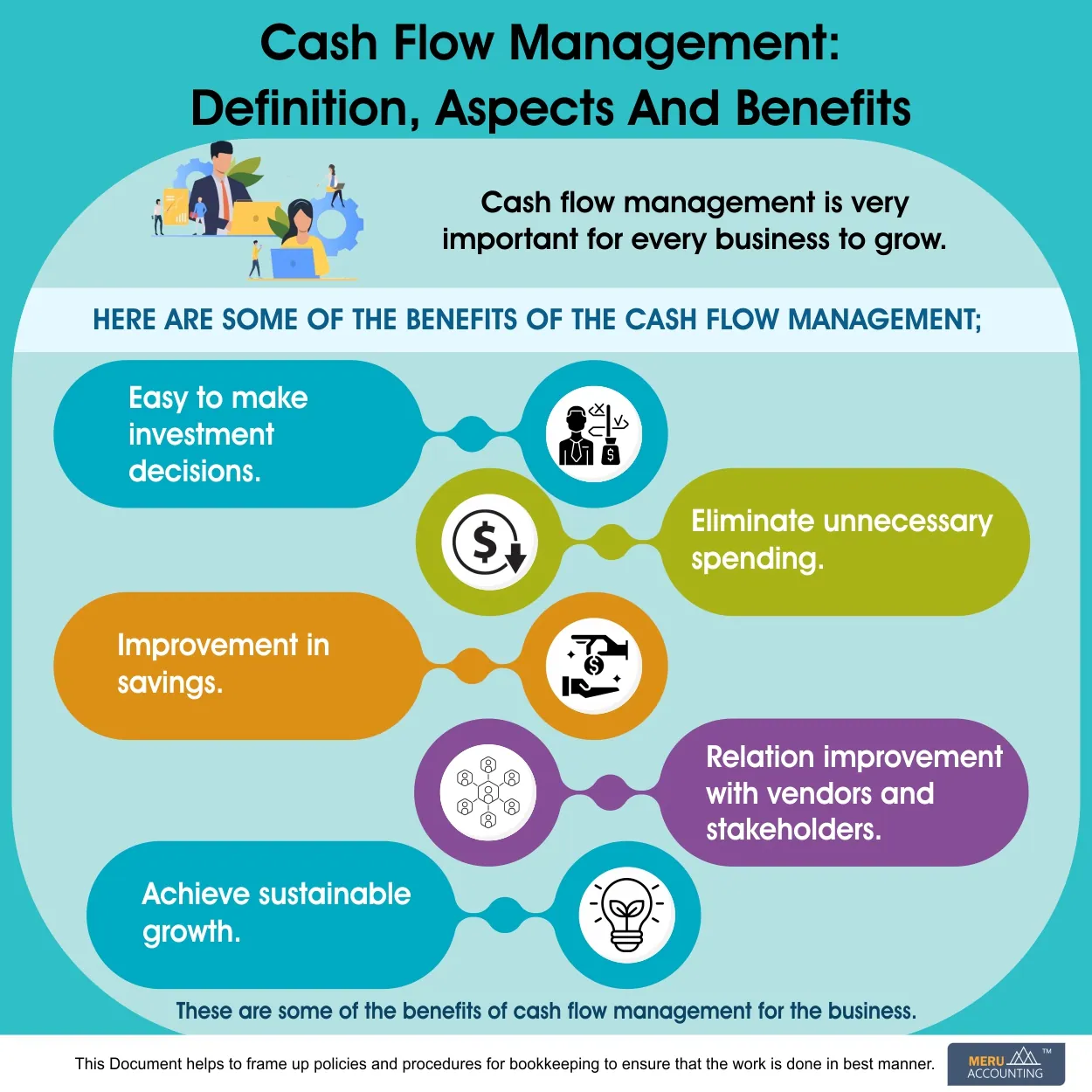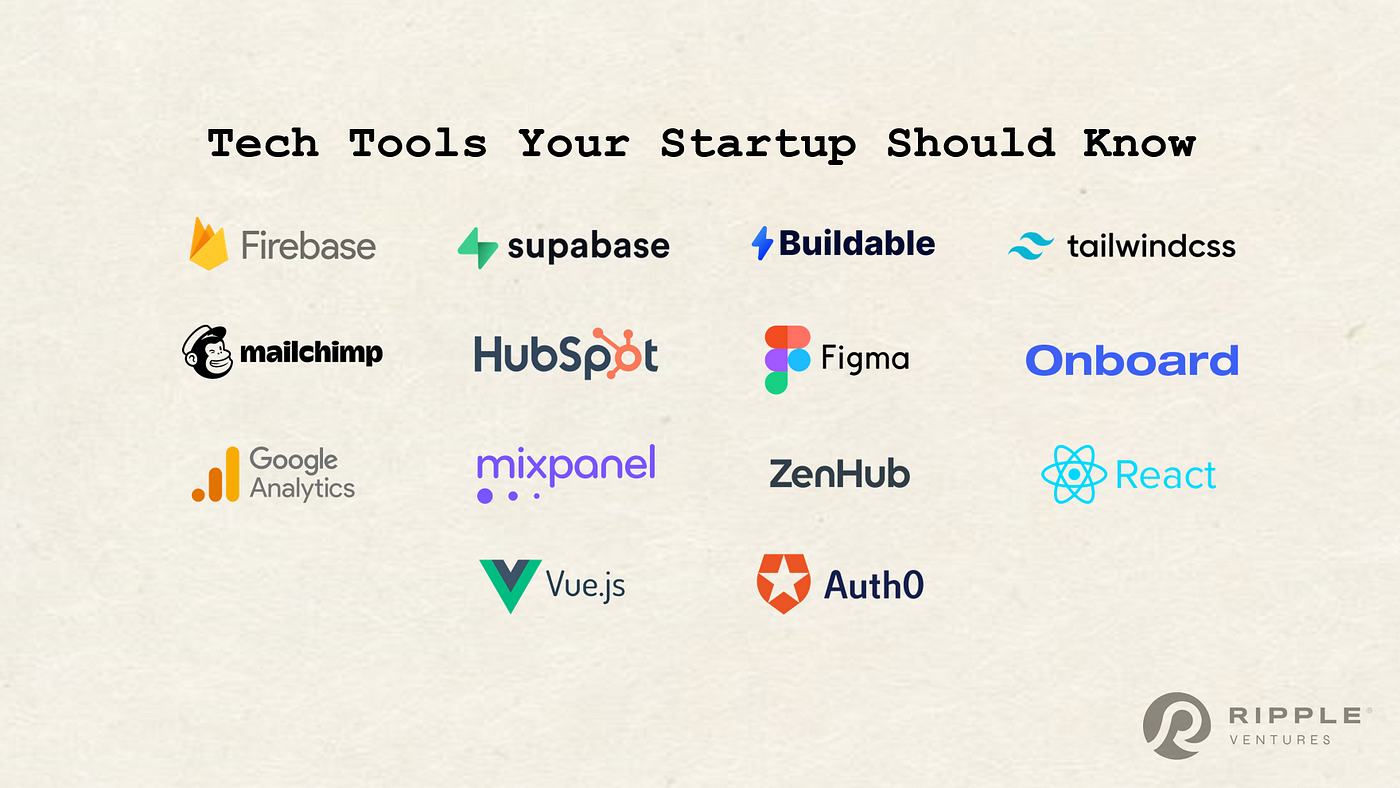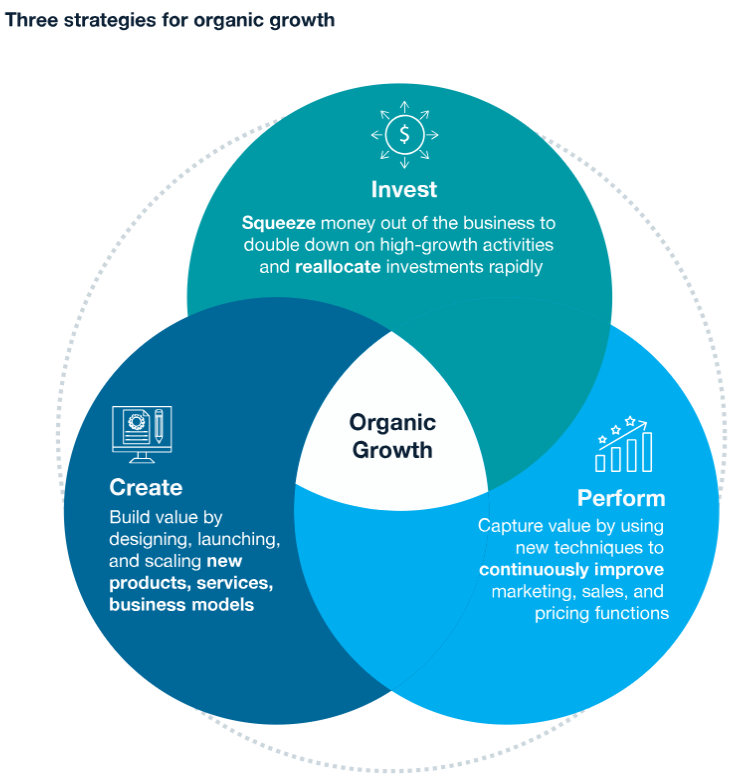Bootstrapping in 2024: Mastering the Art of Self-Funded Success
According to a recent study, 80% of successful bootstrapped startups reach profitability within their first 18 months of operation. This statistic hits close to home. When I launched my first startup, we were running on fumes and determination. Bootstrapping wasn't just a choice—it was our only option. Fast forward to 2024, and the core principles remain. Let's dive into the world of bootstrapping and explore how you can turn limited resources into unlimited potential.
Table of Contents
- Introduction to Bootstrapping
- The Evolution of Bootstrapping
- Core Principles of Bootstrapping
- Bootstrapping Strategies for 2024
- Financial Management for Bootstrapped Startups
- Bootstrapping in the Digital Age
- Scaling a Bootstrapped Business
- Bootstrapping in Different Industries
- Bootstrapping and Company Culture
- Exit Strategies for Bootstrapped Companies
Key Takeaways
- Bootstrapping is a viable and often advantageous strategy for startups in 2024
- Key principles include lean operations, revenue-first mentality, and strategic use of technology
- Successful bootstrapping requires financial discipline, innovative growth strategies, and adaptability
- Industry-specific approaches can help overcome unique challenges in different sectors
- Building a strong company culture and planning for exit strategies are crucial for long-term success
Introduction to Bootstrapping
Bootstrapping isn't just a fancy term for being cheap—it's a strategic approach to building a business with your own resources. In 2024, it's become more than just a necessity for cash-strapped entrepreneurs; it's a choice that offers freedom, control, and the potential for massive returns. We're talking about the art of turning sweat equity into market value, and it's a skill that's more relevant now than ever.
The Evolution of Bootstrapping
Bootstrapping has come a long way from its "ramen noodle" roots. What used to be seen as the last resort of desperate entrepreneurs is now a badge of honor. We've seen scrappy startups transform into industry giants, all without a dime of outside investment. It's not just about survival anymore—it's about thriving on your own terms.
From Necessity to Strategy
Now, bootstrapping is a calculated move. Entrepreneurs are choosing to bootstrap to maintain control, build sustainable businesses, and prove their concept before seeking outside capital.
The Impact of Economic Cycles
Economic cycles affect bootstrapped ventures significantly. During downturns, bootstrapped companies often fare better because they're used to running lean. And when the economy's booming? That's when bootstrappers can really accelerate, leveraging their efficient operations to capture market share.

Core Principles of Bootstrapping
At its heart, bootstrapping is about doing more with less. It's the startup equivalent of turning water into wine—except instead of divine intervention, you're relying on creativity, hustle, and a keen eye for efficiency.
Lean Operations
Lean isn't just a buzzword—it's a way of life for bootstrappers. We're talking about squeezing every ounce of value out of your resources. It's about being scrappy, not crappy. You don't need a fancy office or a huge team to make waves in your industry. What you need is a laser focus on what truly matters: delivering value to your customers.
Revenue-First Mentality
In the bootstrapping world, cash is king, queen, and the entire royal court. A revenue-first mentality means prioritizing cash flow from day one. It's about finding that sweet spot where you're bringing in enough dough to keep the lights on and fuel growth. This isn't just about survival—it's about building a sustainable business that can weather any storm.
According to a study by Bootstrapping.com, 80% of successful bootstrapped startups reach profitability within the first 18 months of operation. [Bootstrapping Success Rates]
Bootstrapping Strategies for 2024
In 2024, we're not just pinching pennies—we're leveraging cutting-edge tools and techniques to stretch our resources further than ever before. Bootstrappers can now punch above their weight class thanks to these modern approaches.
For those looking to enhance their online presence, AnotherWrapper's Blog Features provide insights on using Contentlayer for SEO-friendly blog creation, which can be valuable for bootstrapped startups.
Leveraging Technology
Technology is the great equalizer for bootstrappers. With the right tools, a one-person operation can look and function like a much larger enterprise. We're not talking about smoke and mirrors here—it's about using tech to automate, optimize, and scale your operations efficiently. From AI-powered customer service to cloud-based infrastructure, the possibilities are endless.

Cloud Computing and SaaS
Cloud computing and SaaS have changed the game. Now, you can spin up a world-class infrastructure with a few clicks and a credit card. It's a scalable, pay-as-you-go IT resource that's accessible to bootstrappers.
AI and Automation
AI isn't just for tech giants anymore—it's a bootstrapper's best friend. From chatbots that handle customer queries 24/7 to algorithms that optimize your ad spend, AI can be like having a tireless team working around the clock. And the best part? Many of these tools are surprisingly affordable, or even free for small-scale use.
For bootstrapped startups looking to create high-quality, SEO-optimized content efficiently, AnotherWrapper's AI-Powered SEO Blog Post Writer can be a game-changer.
Alternative Funding Sources
In 2024, creative funding options are abundant. From crowdfunding campaigns that double as marketing blitzes to revenue-based financing that aligns with your growth, there's a buffet of options for the discerning bootstrapper.
Crowdfunding
Crowdfunding isn't just about raising money—it's about building a community. When you launch a crowdfunding campaign, you're not just asking for cash; you're inviting people to be part of your journey. The goal is to learn fast and iterate faster.

Revenue-Based Financing
Revenue-based financing is financing that breathes with your business. Instead of fixed monthly payments, you pay a percentage of your revenue. When business is booming, you pay more. When things slow down, you pay less. Plus, you don't have to give up equity, which means you keep control of your business.
AgTech startup Inform Ag recently secured a $7 million investment after 12 years of bootstrapping, demonstrating the potential for long-term bootstrapping success. The company, which develops farm management platforms, posted 300% revenue growth last financial year and is now profitable. [AgTech Startup Harvests $7 Million After 12 Years of Bootstrapping]
Financial Management for Bootstrapped Startups
When you're bootstrapping, every dollar counts. Financial management for bootstrappers is part science, part art, and a whole lot of discipline. It's like being a tightrope walker, but instead of a safety net, you've got a spreadsheet.
Bootstrapped startups can use AnotherWrapper's AI-Powered Blog Article Generator to create content efficiently, saving time and resources for financial management.
Cash Flow Optimization
Cash flow is the lifeblood of any business, but for bootstrappers, it's the whole circulatory system. Optimizing your cash flow isn't just about having money in the bank—it's about timing. It's knowing when to hold 'em, when to fold 'em, and when to walk away (from unnecessary expenses, that is).

Forecasting and Budgeting
Forecasting in a bootstrapped startup is challenging, but not impossible. The key is to stay flexible. Your flexible budget shouldn't be set in stone—it should be easily moldable as circumstances change. And they will change. Regularly.
Accounts Receivable Management
Getting paid on time is crucial when you're bootstrapping. Late payments can be the difference between smooth sailing and choppy waters. It's not just about sending invoices—it's about building relationships with your clients that encourage prompt payment. Don't be afraid to follow up on those overdue invoices. Your business depends on it.
Cost Control Measures
Cost control isn't about being cheap—it's about being smart with your resources. It's the art of knowing where to splurge and save. Every dollar you save is a dollar you can invest back into your business. It's like planting seeds for future growth.
Variable Cost Structures
Variable costs are a bootstrapper's best friend. They're like a business suit that grows or shrinks with you. By keeping your cost structure flexible, you can adapt to changes in revenue without breaking the bank. It's about being nimble, ready to scale up when business is booming and trim down when things get tight.
Strategic Outsourcing
Outsourcing isn't just for big corporations anymore. For bootstrappers, it can be a game-changer. It's like having a team of specialists on speed dial, without the overhead of full-time salaries. From virtual assistants to freelance designers, there's a world of talent out there ready to help you scale. Just focus on value, not just price.
A survey by Fundable found that 57% of startups are funded through personal savings and credit, highlighting the prevalence of bootstrapping. [Startup Funding Infographic]
Bootstrapping in the Digital Age
In 2024, the digital landscape isn't just a part of your business—it is your business. From e-commerce platforms that turn your garage into a global storefront to remote work tools that make the world your office, the digital age has rewritten the rules of bootstrapping.

E-commerce and Direct-to-Consumer Models
E-commerce isn't just about selling stuff online anymore—it's about creating digital experiences that turn browsers into buyers. With platforms like Shopify and WooCommerce, you can set up shop faster than you can say "add to cart." And your Instagram feed isn't just for cute cat pics; it's a social commerce channel waiting to be tapped.
Dropshipping and Print-on-Demand
Dropshipping and print-on-demand are like the cheat codes of e-commerce. They start selling products without the headache of inventory management or upfront production costs. It's like having a fully stocked warehouse without actually having a warehouse. You'll need to bring your A-game in marketing to stand out from the crowd.
Social Commerce
Social commerce is where socializing and shopping have a baby, and that baby is addictive. It's not just about slapping a "buy now" button on your posts—it's about creating a seamless shopping experience within the platforms where your audience already hangs out. From Instagram Shopping to TikTok's partnership with Shopify, the lines between scrolling and shopping are blurrier than ever.
Remote Work and Virtual Teams
The office of the future isn't an office at all—it's wherever you happen to be with a decent internet connection. Remote work isn't just a trend; it's a full-blown revolution. For bootstrappers, it's a godsend. No need to shell out for expensive office space when your team can collaborate from anywhere in the world. But managing a virtual team takes a whole new set of skills. Time to level up your digital leadership game. Source: blog.gainapp.com Alt Tag: "Collaboration Tools for Remote Teams"
Collaboration Tools
In the world of remote work, your collaboration tools are your digital office. Slack for chit-chat, Zoom for face time, Trello for project management—these aren't just apps, they're the pillars of your virtual workspace. The key is finding the right balance. You want a tech stack that enhances productivity, not one that turns your workday into a game of app hopscotch.
Global Talent Acquisition
The world is your talent pool, and it's deeper than ever. With remote work, you're no longer limited to hiring within a 50-mile radius of your HQ. You can tap into global talent markets, finding the perfect fit for your team regardless of geography. Navigating different time zones, cultures, and work styles takes finesse.
Scaling a Bootstrapped Business
Scaling a bootstrapped business is exhilarating, terrifying, and requires nerves of steel. But here's the secret: it's not about growing as fast as possible. It's about growing smart. It's about finding that sweet spot where you're expanding your reach without overextending your resources.
Organic Growth Techniques
Organic growth is the holy grail of bootstrapping. It's about growing your business using its own resources, like a plant that grows from its own seeds. The beauty of organic growth is that it's sustainable and puts you in control. But it's not always fast, and it requires patience.

Customer-Funded Growth
Who needs venture capital when you've got customers? Customer-funded growth is like having your cake and eating it too. You're not just selling products or services; you're using your customers' money to fuel your expansion. Pre-orders, subscriptions, milestone billing—these aren't just revenue streams, they're growth engines.
Content Marketing and SEO
In the digital age, content is currency, and SEO is the exchange rate. A solid content marketing strategy combined with SEO can be a bootstrapper's best friend. It's a long game, but when it pays off, it pays off big.
Strategic Partnerships
In the world of bootstrapping, strategic partnerships are like finding a cheat code for growth. It's about finding other businesses that complement yours and creating win-win situations. Maybe it's a joint marketing campaign, a product integration, or a shared distribution channel.
Co-Marketing Initiatives
Co-marketing is about creating genuine value for both your customers. Maybe it's a joint webinar, a collaborative product bundle, or a shared content series. The key is finding that sweet spot where 1+1=3.
White-Label Solutions
White-label solutions are about taking your awesome product or service and letting other companies sell it under their own brand. Suddenly, you've got a whole army of salespeople without the overhead of actually hiring them. It's a great way to expand your reach and revenue streams.
Bootstrapping in Different Industries
Bootstrapping isn't one-size-fits-all. What works for a SaaS startup might not work for a local bakery. Each industry has its own quirks, challenges, and opportunities when it comes to bootstrapping.
:max_bytes(150000):strip_icc()/bootstrapping.asp-FINAL-568f1e65d4a34316abb9f8741b96d179.png)
Tech Startups
Tech startups and bootstrapping go together like code and coffee. In this world, your brain is your biggest asset, and a laptop is your factory. The beauty of tech is that you can often build an MVP (that's Minimum Viable Product for the uninitiated) with little more than time and brain power. But here's the kicker: the tech world moves at lightning speed. You've gotta be nimble, ready to pivot faster than a ballerina on espresso.
Minimum Viable Product (MVP) Approach
The MVP is your golden ticket in the tech world. It's not about building the perfect product—it's about building just enough to get real feedback from real users. The goal is to learn fast and iterate faster.
Open Source Leverage
Open source is like the community garden of the tech world. It's free, it's collaborative, and it can seriously supercharge your bootstrapping efforts. By leveraging open-source technologies, you can build on the shoulders of giants without paying giant prices. But it's not just about taking—it's about giving back too. Contributing to open-source projects can boost your reputation and even lead to new business opportunities.
Service-Based Businesses
Service-based businesses are the unsung heroes of the bootstrapping world. Your main asset? Your skills and expertise. Your inventory? Your time. The beauty is in the simplicity—you can often start with little more than a laptop and a willingness to hustle. But here's the challenge: scaling. When your primary product is your own time and effort, growth can feel like trying to stretch a rubber band without snapping it. The key is to work smarter, not just harder.
Personal Branding
In the service world, you are your brand. Personal branding isn't just for influencers—it's your secret weapon for standing out in a crowded market. It's about packaging your expertise in a way that's uniquely you. Consistency is key.
Value-Based Pricing
Value-based pricing is about charging based on the value you deliver, not the time you spend. It's a mindset shift, both for you and your clients. Instead of selling hours, you're selling outcomes. It takes confidence and clear communication, but get it right, and you'll find yourself working less while earning more.
Bootstrapping and Company Culture
Company culture isn't just for big corporations with fancy offices and ping-pong tables. In fact, culture is even more crucial when you're bootstrapping. It's the glue that holds your lean, mean team together when the going gets tough. But here's the thing: you can't just declare a culture—it's built day by day, decision by decision.
Fostering Entrepreneurial Spirit
In a bootstrapped startup, everyone needs to think like an entrepreneur. It's not about job titles—it's about ownership mentality. You want a team of people who see problems as opportunities and take initiative without being asked. It's like having a crew of mini-founders, all rowing in the same direction. But fostering this spirit takes more than just saying "be entrepreneurial." It requires trust, autonomy, and yes, the occasional failure.
Intrapreneurship Programs
Intrapreneurship is like giving your team a sandbox to play in—but instead of sand castles, they're building potential new business lines. It's about creating space for innovation within your company. Maybe it's a regular hackathon, a "20% time" policy like Google's, or a formal process for pitching and developing new ideas. The goal is to tap into the creative potential of your team.
Transparent Financial Management
Financial transparency isn't just nice to have—it's essential. When resources are tight, everyone needs to understand the impact of their decisions on the bottom line. It's like giving your team X-ray vision into the company's finances. But this isn't about inducing anxiety—it's about empowerment. When people understand the numbers, they make better decisions. They become stewards of the company's resources, not just employees. And that is how you build a culture of ownership.
Lean Team Building
Building a lean team is like assembling the Avengers—you want a small group of superheroes, each with their own unique powers. In the bootstrapping world, generalists often trump specialists. You're looking for Swiss Army knives, not single-purpose tools. But here's the catch: finding these multi-talented individuals isn't easy, and keeping them engaged is even harder. It's a delicate balance of challenging work, growth opportunities, and the thrill of building something from scratch.

Skills-Based Hiring
In the bootstrapping world, fancy degrees and impressive titles take a backseat to actual skills and adaptability. It's not about where you've been—it's about what you can do and how quickly you can learn. Skills-based hiring is about packaging your expertise in a way that's uniquely you. You're assessing candidates based on their ability to contribute across multiple areas. Can they write code and talk to customers? Design interfaces and manage projects? The more hats they can wear, the more valuable they are to your lean team.
Performance-Based Compensation
When you're bootstrapping, every dollar counts—including the ones you pay your team. Performance-based compensation is about creating a system where everyone wins when the company wins. This could mean equity, profit-sharing, or bonuses tied to specific goals. The key is transparency and fairness. You want your team to feel like co-pilots on this journey, not just passengers.
Exit Strategies for Bootstrapped Companies
For many bootstrappers, the exit strategy is the light at the end of the tunnel, the pot of gold at the end of the rainbow. But here's the thing: your exit strategy isn't just about the endgame. It shapes your entire journey. Are you building to sell? To go public? Or to create a lasting legacy? Each path requires different decisions along the way.
Acquisition Preparation
Preparing for acquisition is like getting your house ready for sale—except instead of a fresh coat of paint, you're polishing your financials and streamlining your operations. It's about making your company so irresistible that potential buyers are lining up at the door. But here's the secret: the best way to prepare for acquisition is to build a great company, period. Focus on creating real value, and the buyers will come.
Strategic Value Creation
Creating strategic value is about making your company the missing puzzle piece in someone else's big picture. Maybe you've cornered a niche market, developed a unique technology, or built a loyal customer base in a hard-to-reach demographic. It's about being more than just a successful business—you want to be a strategic asset.
Financial Health and Transparency
When it comes to acquisitions, your financials are like your dating profile—they need to be honest, attractive, and ready for scrutiny. Financial health isn't just about being profitable (though that certainly helps). It's about having clean books, clear processes, and a history of smart financial decisions. Transparency is key. You want potential buyers to see a well-oiled machine, not a black box of financial mysteries.
IPO Considerations
Going public is like strapping a rocket to your bootstrapped business—it can propel you to new heights, but it's not for the faint of heart. An IPO can provide capital for rapid growth and a lucrative exit for founders and early employees. But it also means opening your books to the world, dealing with shareholders, and navigating a maze of regulations.

Growth and Scalability
When it comes to IPOs, size matters. Investors want to see a company with not just a great past, but a bright future. It's about demonstrating that your growth story is just getting started. You need to show that you've got room to run—lots of room. So focus on scalability, addressable market size, and your roadmap for growth.
Governance and Compliance
Preparing for an IPO is like getting ready for a financial colonoscopy—every aspect of your business is going to be examined, inside and out. You need robust governance structures, ironclad compliance processes, and financial reports so clean you could eat off them. It's not just about following rules—it's about building a foundation of trust with potential investors.
Learnings Recap
Bootstrapping isn't just about pinching pennies—it's about being resourceful, adaptable, and relentlessly focused on creating value. It's about building a business that's not just profitable, but sustainable and scalable. And perhaps most importantly, it's about maintaining control of your destiny.
- Lean operations and a revenue-first mentality are crucial for bootstrapped success
- Leverage technology and alternative funding sources to maximize growth potential
- Focus on building a strong company culture that fosters innovation and ownership
- Adapt bootstrapping strategies to your specific industry and business model
- Plan for the long-term, including potential exit strategies, from the beginning
- Embrace the challenges of bootstrapping as opportunities for creativity and innovation
Final Thoughts
As we wrap up this deep dive into bootstrapping in 2024, I can't help but feel a sense of excitement. The landscape of entrepreneurship is ever-changing, but the spirit of bootstrapping remains a constant source of inspiration. It's a testament to human ingenuity, perseverance, and the power of a great idea backed by relentless execution.
For those of you embarking on your bootstrapping journey, it won't be easy, but it will be worth it. You'll face challenges that seem insurmountable, celebrate victories that seem miraculous, and learn more about yourself and your business than you ever thought possible.
If you're looking to supercharge your bootstrapping efforts, especially in the realm of AI-powered applications, AnotherWrapper is an all-in-one Next.js AI starter kit tailor-made for bootstrappers looking to build cutting-edge apps without breaking the bank. It's like having a team of AI experts in your back pocket, ready to help you turn your ideas into reality.
So go forth, brave bootstrappers. Build something amazing. Change the world. Every great company started somewhere—why not with you, right now?
